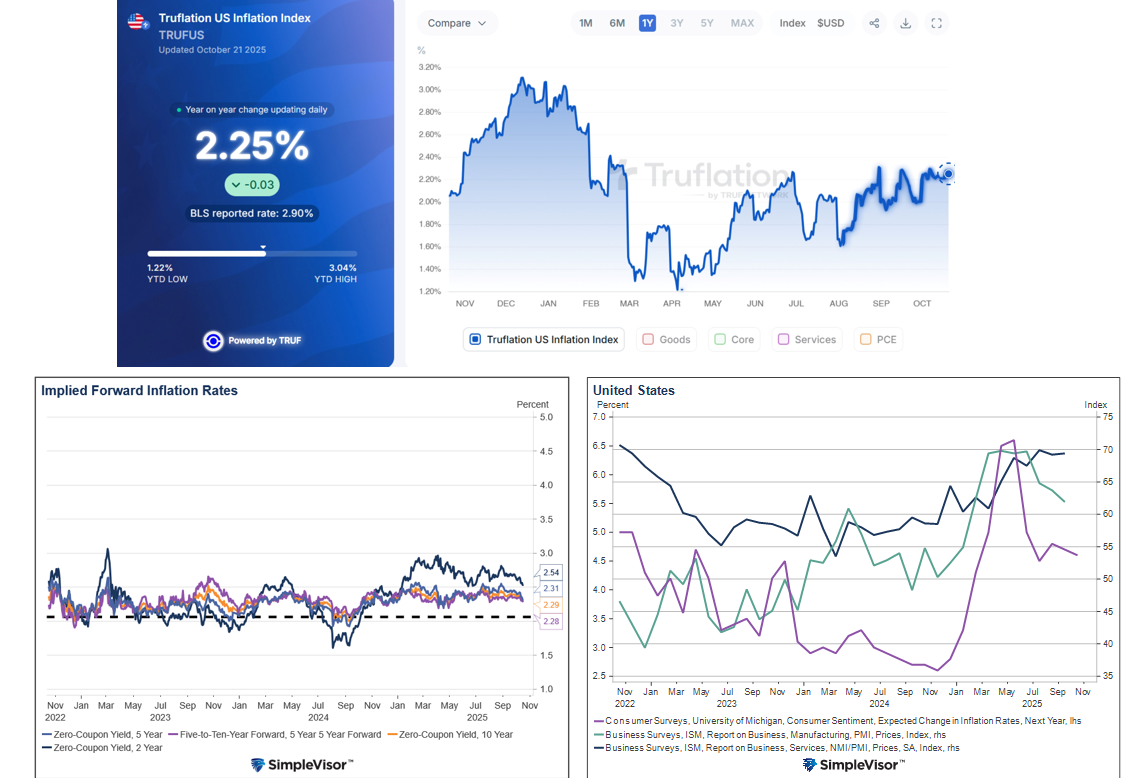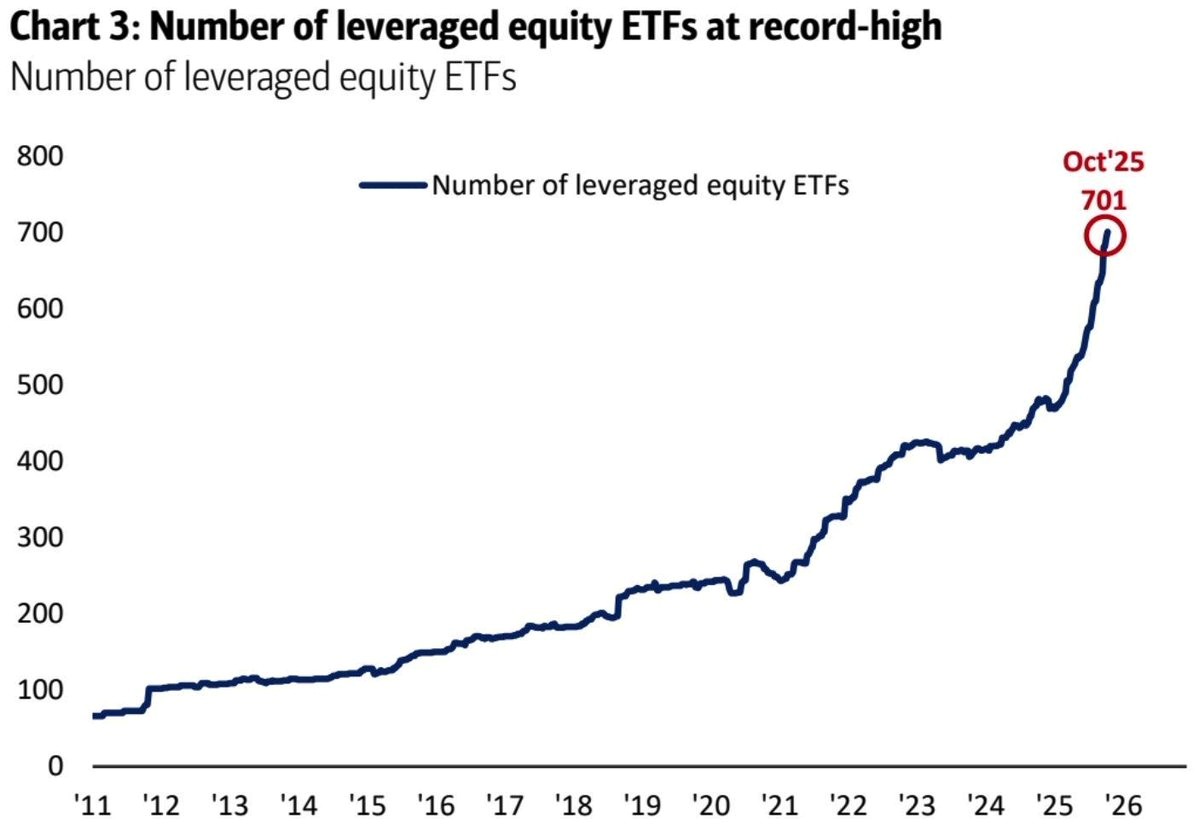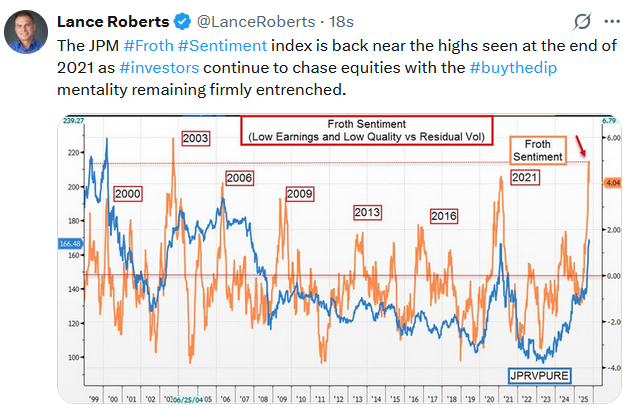Tyson Foods to close major Nebraska beef plant amid cattle shortage - WSJ
As we approach today’s delayed CPI report, it’s helpful to look beyond government statistics to focus on a more current and robust picture of inflation.
Implied Inflation: This is derived from comparing the yields of nominal Treasury securities to Treasury Inflation-Protected Securities (TIPS). The graph below (bottom left) shows that implied inflation, also known as break-evens, has been gently declining. The shortest measure of inflation expectations, the 2-year break-even, has fallen from nearly 3% at the start of the year to 2.50% today. The market doesn’t seem overly concerned with tariffs generating inflation.
Truflation: This independent organization uses over 30 million data points to compute its real-time inflation index. For comparison, the BLS uses about 80,000 items in its CPI report. Per the top graphic below, Truflation’s measure has waffled between 2.00% and 2.25% for the last few months. This leaves us to believe that inflation has not upticked significantly since April, as many feared.
Surveys: ISM services and manufacturing gauges (bottom right green/black lines) of price changes have stabilized at high levels due to anticipated tariff-related inflation. The indicator measures how many respondents think inflation is rising versus falling. It doesn’t try to quantify a perceived inflation rate.
Conversely, the University of Michigan Survey (bottom right- purple) asks consumers where they think inflation will be a year from now. After peaking at 6.5% on tariff concerns, it has fallen to 4.5%. Sentiment regarding inflation remains high. The risk is that consumers and corporate behaviors might stoke inflation if they believe it will increase.
It’s worth noting that implied inflation and Truflation tend to be much better predictors of inflation than the surveys.
Leveraged ETFs Are Growing Rapidly
Not only are some investors chasing the most speculative of stocks and other assets, but they are also employing record amounts of leverage to do so. The graph below, courtesy of BofA, shows that there are now over 700 leveraged ETFs. Most of these ETFs give their investors 2x or 3x the daily returns on an underlying index or individual stock. Some go as high as 5%.
Leveraged ETFs reset daily. Which means the funds must buy or sell the underlying index to stay balanced. Further, the leverage combined with the daily resets means that returns of the leveraged ETFs versus the underlying assets drift over time, especially in high volatility environments.
The increased leverage is not just a risk to those using the leverage, but it’s a broad market risk as well. For instance, these funds have to chase the market. When the market is upward trending, leveraged ETF managers are forced buyers, thus accentuating gains.
The opposite holds true in down markets. However, in a disorderly decline, the undue selling pressure can cause pockets of steep declines. A one-off example occurred in the cryptocurrency market on October 11th, as we documented in our Commentary, The AltCoin Liquidity Bloodbath.
While the proliferation of leveraged ETFs is relatively new, Wall Street has a long history of creating complex leveraged products, which tend to allow more access to risk and leverage. For some astute traders, leveraged ETFs and other forms of leverage can be very profitable. However, as history has shown time and time again, retail traders ultimately pay the price by getting caught chasing markets when they peak.
Tweet of the Day

